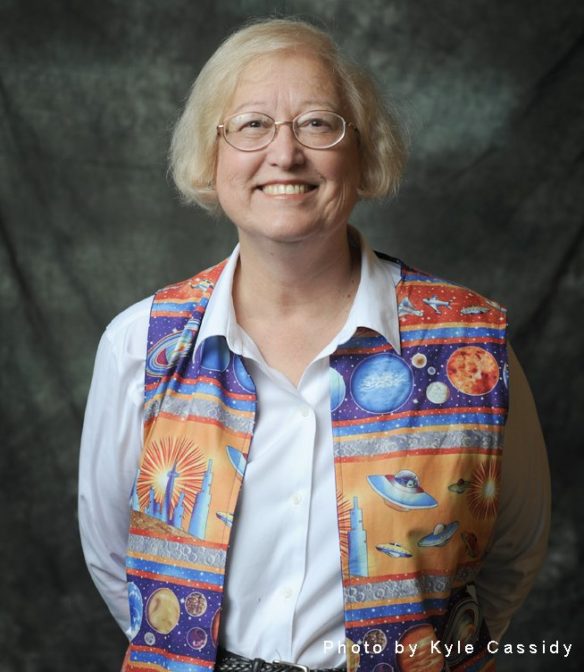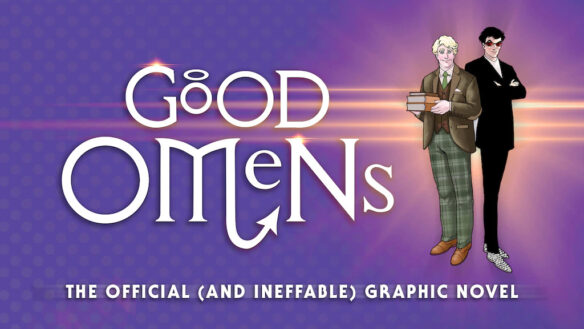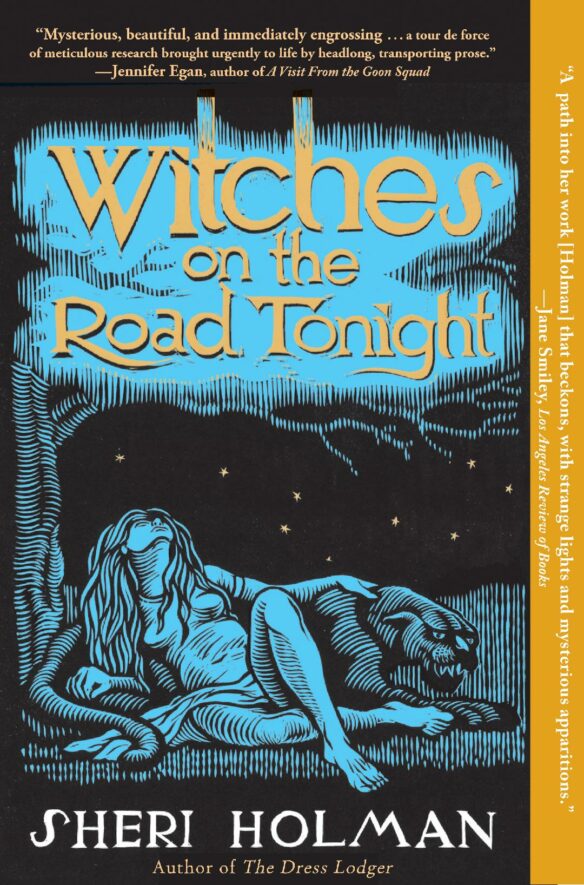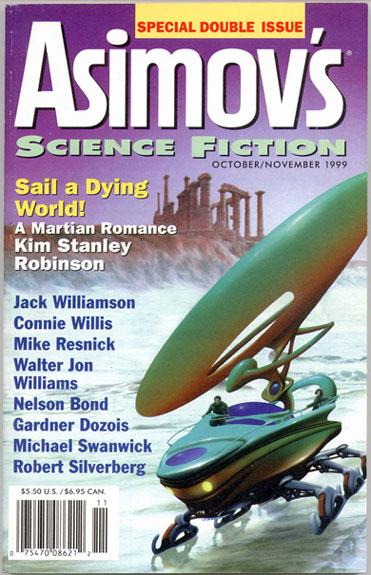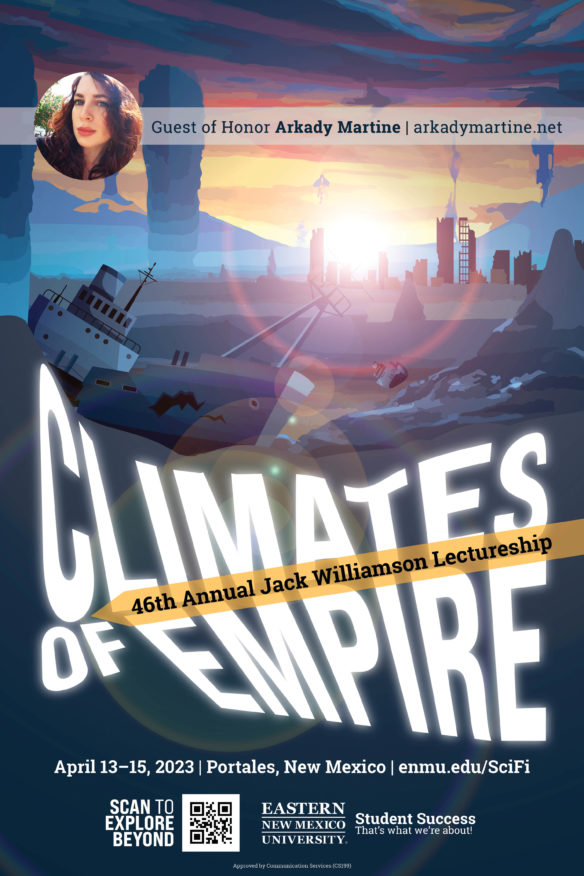(1) WILL THE DOCTOR APPROVE WHEN BBC MARKETING DEPARTMENT USES AI TO PROMOTE DOCTOR WHO? [Item by Ersatz Culture.] The BBC media centre published an article by the “Head of Media Inventory: Digital” earlier today, about their plans to use AI to promote Doctor Who. It leads:
Experimentation is at the heart of how we approach marketing at the BBC. Testing and learning on how we let audiences know what BBC content is most relevant to them and we know they might love underpins our digital marketing strategy. However, experimentation in marketing typically requires more time spent on the creative work to make extra assets. Generative AI offers a great opportunity to speed up making the extra assets to get more experiments live for more content that we are trying to promote.
We’re going to take it one step a time, starting simple and learning as we go. We have chosen to start with Doctor Who, as it is a joint content priority for both BBC Public Service UK and BBC Studios marketing teams. There’s a rich variety of content in the Whoniverse collection on iPlayer to test and learn with, and Doctor Who thematically lends itself to AI which is a bonus.
We will be creating human-written marketing copy for a Doctor Who push notification, email subject line and in the promotional rail on BBC Search – then we will be using generative AI to suggest copy variations which are then reviewed and approved by our marketing team before being shown to the audience. Their success will be measured by click- rates, open-rates, and post-impression conversion-rates across each channel.
The article also provides details about how the BBC proposes to have human oversight and review of this process.
One fan pointed out that the 1979 story “City of Death” had already depicted the Doctor’s attitude towards computer-generated content.
(2) CHILDREN’S BOOK AUTHORS SIGN OPEN LETTER ABOUT GAZA. Publishers Weekly reports on an open letter to the Society of Children’s Book Writers and Illustrators signed by children’s book creators in “SCBWI Addresses the Humanitarian Crisis in Gaza”.
… Hundreds of children’s and YA creators including Jason Reynolds, Elizabeth Acevedo, Brendan Kiely, Sabaa Tahir, and Maggie Tokuda-Hall added their names to the petition, which features an illustration—“We Feel Your Silence”—by Egyptian-born picture book artist Hatem Aly….

The full text of the open letter is at the link. The letter begins:
Dear Society of Children’s Book Writers and Illustrators,
Our community of kids’ book creators and readers is calling out for solidarity and transparency.
The humanitarian crisis in Gaza is the deadliest for children in modern history. UNICEF, among other leading human rights organizations like Amnesty International and Human Rights Watch, recognized that “there is no safe place for children in Gaza” and that this is a war against children.
As the preeminent global community for children’s book creators whose mission is to, in part, “establish a more imaginative and inclusive world through the power of children’s literature,” many active, past, and prospective members of the community are struggling to feel a sense of inclusion and belonging when SCBWI remains silent.
Currently, over a million children are being actively starved while the Israeli government refuses to permit aid into the Gaza strip. Children are being carpet bombed and sniper-attacked in the Israeli government designated safe zone, Rafah, with nowhere to escape. Thousands of children have been orphaned, wounded, undergone surgeries and amputations without anesthesia, and disabled. Palestinian libraries, schools, universities, and publishing houses have been decimated….
Some signers from the sff community whose names jumped out at me are: Alaya Dawn Johnson, Alex Brown, Alyssa Wong, B. Sharise Moore, Daniel José Older, Jacqueline Woodson, Natalie C. Parker, Olivia A. Cole, Raina Telgemeier, and Tochi Onyebuchi.
SCBWI’s Executive Director has responded with a message on Instagram:
According to Publishers Weekly —
…Responses were mixed, and executive director Sarah Baker engaged with several commenters directly. Various community members thanked SCBWI “for supporting the voices of all authors and illustrators… while acknowledging this horrendous war and humanitarian crisis.” Others called the letter “performative” and “disappointing,” some said they would not renew subscriptions, and one called the approach “genocidal apologism.” SCBWI has more than 22,000 members around the world….
(3) URSA MAJOR AWARDS DITCH MUSIC CATEGORY. The Ursa Major Awards for anthropomorphic literature and arts announced March 6 they have dropped the Music Category.
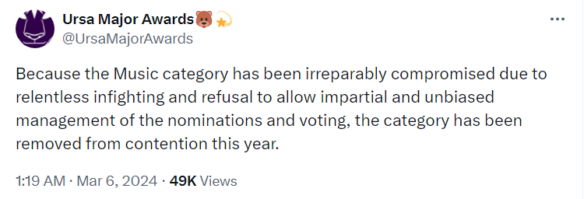
No further explanation was given. Commenters seem to believe the decision was in response to a specific instance of ballot stuffing, or a finalist’s use of AI to create art.
(4) JACK WILLIAMSON LECTURESHIP. David Sweeten has circulated the schedule for the 47th Annual Jack Williamson Lectureship, being held at Eastern New Mexico University from April 11-13 in Portales, NM. The guest of honor is Martha Wells, with emcee Connie Willis.

Below is a brief rundown of the events as they stand, but some items are still in development. Generally, the main events of the Lectureship will take place on Friday, but please let me know if you can make the dinner on Thursday. Also, Connie’s workshop on Saturday is always a delight.
- Thursday, April 11th:
- 3 pm: a forensic talk from Cordelia Willis.
- 5-7 pm: Opening event in the Greyhound Lounge (CUB basement) with activities run by ENMU student organizations (including the History Guild doing a presentation on Jack Williamson, the Clayhounds [ENMU ceramics club] bringing scifi themed pottery and paint-and-takes, and more)
- 7-9 pm: Lectureship participant dinner for authors, the committee, and academic presenters (please email me if attending so I can update the catering)
- Friday, April 12th:
- 8:30 am: Academic Panel (CUB, Zia room)
- 10 am: Guest of Honor Reading from Martha Wells (CUB, Zia room)
- 12 pm: Keynote lunch with remarks from Connie Willis, keynote address from Martha Wells, and scifi/fantasy trivia
- 1:30 pm: Tour of Special Collections, including Jack’s Office and the Science Fiction Special Collection (GSSC, Special Collections)
- 1:30 pm: Board Game Session (GSSC, Presentation Area)
- 3-6:30 pm: Author Panels (JWLA)
- 7 pm: Dinner at Asplunds’ house, Potluck
- Saturday, April 13th:
- 8:30 am: Academic Panel (JWLA)
- 10 am: Connie’s Writing Workshop (JWLA)
(5) TERRY CARR ON THE DILLONS. In January we reported the sale of Leo and Diane Dillon’s original art for the cover of The Left Hand of Darkness (see Pixel Scroll 1/27/24 item #2). Le Guin’s book was part of the Ace Specials series edited by Terry Carr.
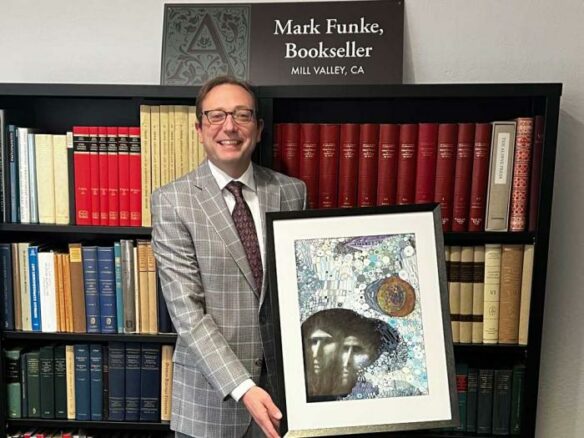
Yesterday I happened upon an article Carr wrote for the fanzine Focal Point in 1971 (see page 6) right after he had to “fire” them because he was told their covers weren’t helping to sell the books. Though he reassured everyone:
…Don’t weep for Leo and Diane. They’re among the most sought-after artists in the book field, and they make a lot more money from the work they do for Time-Life Books or Fawcett Premier than we could ever pay them at Ace. When you visit them and look in on their studio you find incredibly beautiful sketches and partially finished paintings there. ’’That one was due last Tuesday,” says Diane, ’’and we were supposed to have twenty-five double-page spreads done for a history of Hawaii last month.” For the Dillons, the SF Specials were an extra job every month that they didn’t need and which they did for less money than they could get anywhere else. They did them out of friendship and love for the freedom to paint what they wanted….
Carr’s Focal Point column continues with several pages of detailed commentary on the covers they painted for the Ace series.
Ironically, just two issues later, Focal Point reported that Terry Carr himself had been let go by Ace. However, they said Carr would continue editing the Ace Specials, working from home. The last Ace Special in the first series was released in August 1971. Carr would go on to enjoy a highly honored career as a freelance editor. And, in fact, in the Eighties he came back to Ace and edited a second series of Ace Specials.
(6) HOLY CATS, BATMAN! “Lego unveils 4,200-piece set celebrating 85 years of Batman: See the $300 creation” at Yahoo!
Fans of Lego and “Batman: The Animated Series” will have a chance to own a piece of history as Warner Bros. Discovery and DC celebrate 85 years of the Caped Crusader with a new brick set.
Lego Group on Thursday unveiled the Batman Gotham City Skyline set, an “amazing recreation of Gotham City as it appears in ‘Batman: The Animated Series.'”
The Lego press release adds:
…The 4,210 piece set is a Batman fan’s dream as every tower and building meticulously recreates iconic locations from Warner Bros. Animation’s “Batman: The Animated Series” including the Gotham City Court, Arkham Asylum, the classic Batwing and Bat Signal. The set is also full of Easter eggs and beloved characters including Catwoman, The Joker, Harley Quinn and Batman himself. In addition, parts of the set open up to reveal more intricacies inside.
The perfect set for DC fans, the Gotham City Skyline set is a stunning display piece which can be wall-mounted or placed on a shelf….



(7) GOTHAM AFTER DARK. Get an R-rated look at Gotham when The Gotham Follies of 1939: A Dark Night Parody come to Los Angeles on June 1. Tickets go on sale March 13; waitlist at the link.

Experience the allure of Prohibition-era Gotham City in The Gotham Follies of 1939—a captivating parody blending vaudeville, burlesque, cabaret, and contemporary entertainment from the creator of The Empire Strips Back. Step into a world where the Dark Night’s universe comes alive on stage, promising an unforgettable night of laughter, danger, and pure escapism at The Montalbán this summer.
Read the FAQS, ma’am.

(8) NOTES ON A CAREER. In this video from Variety, “Star Wars & Harry Potter Composer John Williams Reveals How He Came Up With Cinemas Biggest Scores”.
Musical genius, John Williams, takes us through his incredible career and shares how the soundtracks for some of the biggest movie franchises such as Star Wars, Harry Potter and Jurassic Park were brought to life.
(9) TODAY’S BIRTHDAY.
[Written by Cat Eldridge.]
Born March 7, 1944 — Stanley Schmidt, 80. This Scroll I come to speak of an editor that I really like, Stanley Schmidt. Starting in 1978, his longest tenure as an editor was at Analog Science Fiction and Fact magazine for an extraordinary thirty-four years. I’m reasonably sure that he was nominated a record twenty-nine times before winning a Best Editor, Short Form at LoneStarCon. That Award came just before his retirement from Analog, nice timing indeed.
But let’s go back in time now.
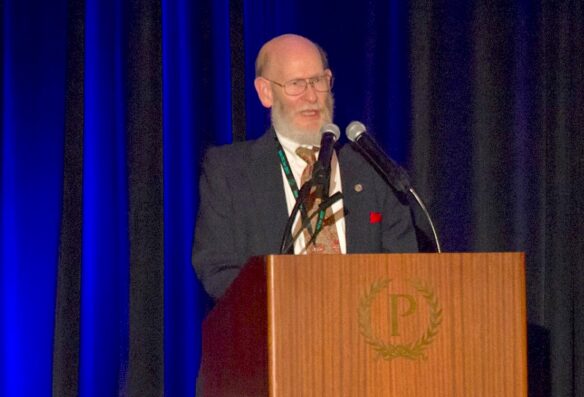
He started out as a writer with his first short story being “A Flash of Darkness” being published in Analog in September of 1968. Likewise his first novel, The Sins of the Fathers, serialized in Analog from November 1973 to January 1974. So one could, well I will, say that his editing of Analog was well rooted in his own history with it.
Now where was I? Oh there. The Sins of The Fathers is an amazing work and would’ve made a stellar series but Schmidt was not, shall I say a prolific writer with just three novels and I count thirty-two short stories, so that didn’t happen. However the Lifeboat Earth collection of nine stories does continue what was started here, so do get it and read them if you enjoyed this novel.
He edited a lot, and I do mean a lot, of Analog anthologies taken from the material he edited in those years he was there. I can’t say which you should read as they’re all likely to have excellent reading in them, aren’t they?
He only edited four other anthologies of which I’ve only read one, having a decided jones for alternate history of all sorts: Roads Not Taken: Tales of Alternate History, co-edited with Gardner Dozois. Turtledove, Silverberg and Resnick, to name but a few, have stories here… Great stories all of course.
Before I take your leave, I should note that he had the honor of winning the Robert A. Heinlein Award which is given for outstanding published works in science fiction and technical writings that inspire the human exploration of space.
(10) THE FEDERATION RETURNS. Camestros Felapton declares “I finally watched Star Trek Discovery Season 4” and delivers a season overview.
…Yes, it is nice that this crew gets to have a season in which they are actually part of a Star Fleet that is not trying to kill them (or is barely functioning) and eventually story elements fall into place that pull things together both thematically and as a genuinely interesting science-fiction story….
(11) FREE GAME. “Indie developer says Warner Bros is “retiring” his game from official platforms, so he’s giving it away for free instead” reports GameRadar+. Download it for free at Fire Face – Games.
Owen Deery, an indie developer behind the puzzle game Small Radios Big Televisions, has stated that Warner Bros. will soon be “retiring” the game from digital storefronts. In response, Deery is giving away the PC version for free to everyone.
Small Radios Big Televisions released back in 2016 on Steam and PS4, published by the Warner Bros. subsidiary Adult Swim Games. The puzzler has you collect cassette tapes found in abandoned factories and explore the virtual worlds within them. However, Deery says it will soon be unable to buy, and that it will be removed from storefronts “within the next few weeks.”…
(12) MEET THE EMPEROR. Vanity Fair learns why at age 80 “Christopher Walken Still Rules: On ‘Dune: Part Two,’ ‘Star Wars’ and True Power”.
Truly intimidating power, Walken says, doesn’t have to announce itself. That’s his explanation for why the long-ruling emperor doesn’t feel obliged to dazzle with his appearance. “There is something about getting older that you’re sort of not inclined to get out of your pajamas,” he tells Vanity Fair. “He maybe doesn’t take a shower as often as he should. There’s a little bit of ‘the hell with it’ at a certain point.”…
…None of that will help a humble earthling get into the mindset of a galactic overlord. “I can tell you that it’s probably better not to think about it,” Walken says. “When I was young, I had to play a king in something. I was in a Shakespeare play. It was Henry II. And an older actor said to me, ‘Don’t worry about it.’ He said, ‘If the director sets it up so that people treat you like the king, you don’t have to do much.’ And I sort of trusted that to happen.”
The show of power and wealth is all around Shaddam IV, so Villeneuve and Walken believed it didn’t have to be piled on top of him as well. “The emperor’s got the trappings, he’s got the court, he’s got the costume, he’s got the bodyguards. And so I figured I’d just let them call me the emperor,” Walken says.
This withholding approach to the intimidating power broker is actually foreshadowed in another iconic Walken performance, in which he delivered an intimidating speech about a lion who reigns as “king of the jungle,” but tolerates the other animals nipping at him, taking food from his domain, and encroaching on his territory—“until one day…that lion gets up and tears the shit out of everybody.”…
(13) ARMORER GUILTY IN RUST VERDICT. AP News reports in Santa Fe, NM, “’Rust’ armorer Hannah Gutierrez-Reed convicted of involuntary manslaughter”.
A jury convicted a movie weapons supervisor of involuntary manslaughter Wednesday in the fatal shooting of a cinematographer by actor Alec Baldwin during a rehearsal on the set of the Western movie “Rust.”
The verdict against movie armorer Hannah Gutierrez-Reed assigned new blame in the October 2021 shooting death of cinematographer Halyna Hutchins after an assistant director last year pleaded no contest to negligent handling of a firearm.
Gutierrez-Reed also had faced a second charge of tampering with evidence, stemming from accusations that she handed a small bag of possible narcotics to another crew member after the shooting to avoid detection. She was found not guilty on that count.
Immediately after the verdict was read in court, the judge ordered the 26-year-old armorer placed into the custody of deputies. Lead attorney Jason Bowles said afterward that Gutierrez-Reed will appeal the conviction, which carries a penalty of up to 18 months in prison and a $5,000 fine.
(14) USE THE CHURCH KEY, LUKE. Stephen Colbert rounded up some more examples of old Cristal beer product placements inserted in Star Wars films for the opening minutes of his Late Show monologue.
(15) PITCH MEETING. It’s an old movie but apparently a new Pitch Meeting – “Ghostbusters (1984)”.
(16) VIDEO OF THE DAY. “The hate monologue” from the I have no mouth and I must scream animation.
[Thanks to Andrew Porter, John King Tarpinian, Kathy Sullivan, N., Ersatz Culture, Dann, Danny Sichel, Chris Barkley, Cat Eldridge, SF Concatenation’s Jonathan Cowie, Steven French, and Mike Kennedy for some of these stories. Title credit belongs to File 770 contributing editor of the day Jayn, with an assist from Braxis.]


